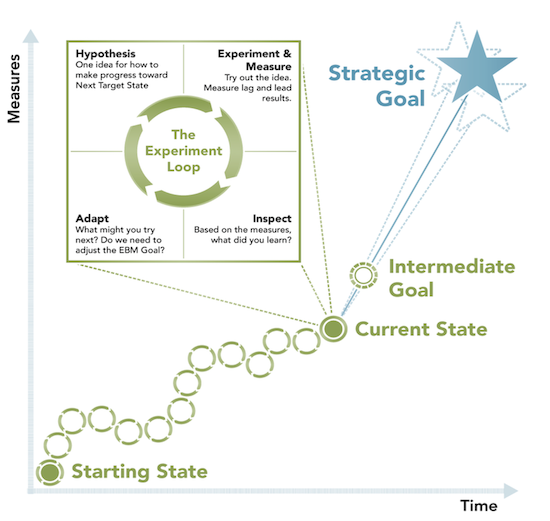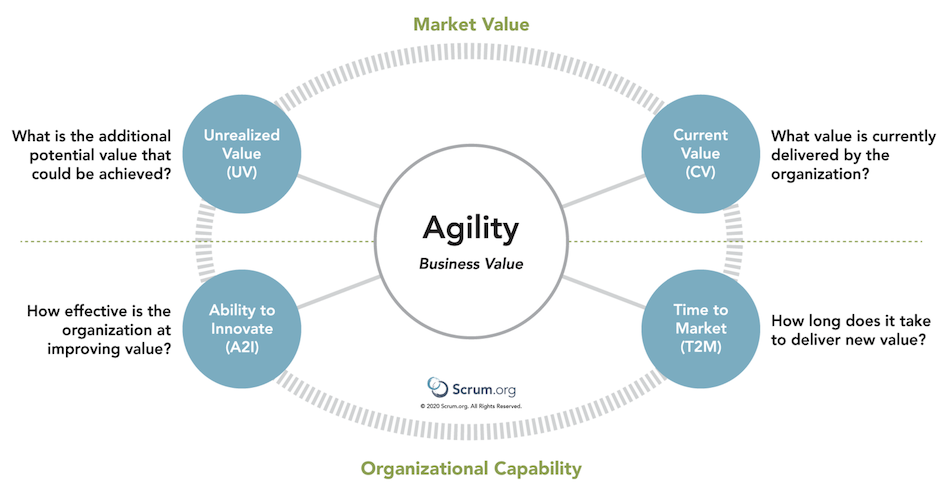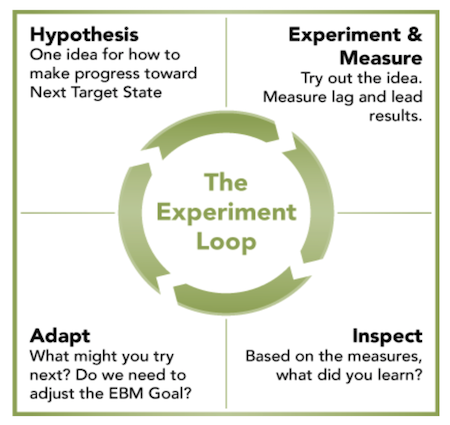POSTED ON 06 MAY 2024
READING TIME: 5 MINUTES
Evidence-Based Management overview

Evidence-Based Management
Over the projects that I’ve been involved with in Sonalake, and in previous roles too, I’ve noticed that the organisations I’ve worked with sometimes take critical decisions subjectively, without always gathering the necessary objective data to support their choices. When this happens, sometimes the focus on strategic goals becomes less clear, making the overall strategy more difficult to achieve.
We know that important decisions should be based on critical thinking by using the best available evidence from a variety of data sources. This varied evidence helps to improve the implementation practices and creates delivery plans that are more aligned with the strategic direction of the organisation.
This is where a structured approach like Evidence-Based Management becomes a vital tool to evaluate the effectiveness of the development process, finding improvement areas, and implementing changes that can help agile organisations in developing adaptive cultures and generating opportunities to gain competitive advantages.
What is Evidence-Based Management?
Evidence-Based Management (EBM) is an empirical approach created by Ken Schwaber, co-creator of Scrum, that enables organisations to measure the value delivered to customers and how this value is delivered. With EBM, businesses can identify improvements and achieve strategic objectives more effectively in an uncertain environment.
How does EBM help to measure Agile Performance?
To achieve a strategic objective, an organisation must take small steps, evaluate the results, and adapt the next action based on feedback. Specific measures should be established when setting interim goals to indicate goal achievement. These measurements must be reviewed to stay strategically aligned in a dynamic market environment.

Figure 1: Reaching strategic goals (scrum.org)
Understand what is Value and improve decision-making with Key Value Areas
EBM focuses on examining organisational goals through Four Key Value Areas (KVAs). These areas are as follows:
- Current Value (CV) - This measures the value that is currently delivered to the customer or user.
- Unrealised Value (UV) - This measures the potential value that can be realised by meeting all the needs of the customer or user.
- Ability to Innovate (A2I) - This measures the ability of an organisation to deliver new capabilities that can better serve the needs of the customer or user.
- Time to Market (T2M) - This measures the ability of an organisation to quickly deliver new capabilities, services, or products.
 Figure 2: EBM focuses on four Key Value Areas (KVA) (scrum.org)
Figure 2: EBM focuses on four Key Value Areas (KVA) (scrum.org)
Each Key Value Area (KVA) provides an insight into an organisation's ability to deliver value. There are four KVAs that organisations need to focus on continually to ensure that they are delivering value to their customers and stakeholders.
The first KVA is Current Value (CV), which refers to the value that the product delivers today. The purpose of examining the CV is to understand the value that the organisation is currently delivering to its customers and stakeholders. Some questions that organisations need to continually re-evaluate for CV are:
- How satisfied are our users and customers today? Is their satisfaction improving or declining?
- How satisfied are our employees today? Is their satisfaction improving or declining?
- How satisfied are our investors and other stakeholders today? Is their satisfaction improving or declining?
The second KVA is Unrealised Value (UV), which refers to the potential future value that could be realised if the organisation met the needs of all potential customers or users. Some questions that organisations need to continually re-evaluate for UV are:
- Can any additional value be created by the organisation in this market or other markets?
- Is it worth the effort and risk to pursue these untapped opportunities?
- Should further investments be made to capture additional Unrealized Value?
The third KVA is Time-to-Market (T2M), which refers to the organisation's ability to quickly deliver new capabilities, services, or products. Some questions that organisations need to continually re-evaluate for T2M are:
- How fast can we learn from new experiments and information?
- How fast can we adapt to the information?
- How fast can we test new ideas with customers?
The fourth KVA is Ability to Innovate (A2I), which refers to the organisation's effectiveness in delivering new capabilities that might better meet customer needs. Some questions that organisations need to continually re-evaluate for A2I are:
- What prevents the organisation from delivering new value?
- What prevents customers or users from benefiting from that innovation?
By continually re-evaluating these four KVAs, organisations can ensure that they are delivering value to their customers and stakeholders and staying ahead of the competition.
How to apply EBM in practice?
To achieve a Strategic Goal, it's important to have a good understanding of the Current State. If your Strategic Goal involves Unrealized Value (UV), you should start by measuring the Current Value (CV) that your product or service delivers. To identify areas that need improvement, you may also need to evaluate your effectiveness (A2I) and your responsiveness (T2M).
The Experiment Loop is a helpful tool for organisations looking to move from their Current State towards their Next Target Goal and ultimately their Strategic Goal. This approach involves taking small, measured steps called experiments, using clear hypotheses.
The loop consists of four steps that include:
- Formulating a hypothesis for improvement
- Conducting experiments and measuring
- Inspecting your results
- Adapt goals or approaches based on what you learned

Figure 3: The Experiment Loop (scrum.org)
Utilising evidence-based approaches enables us to make informed decisions, resulting in successful outcomes. As we evaluate these outcomes, we can refine our approach and enhance our decision-making capabilities for the future.